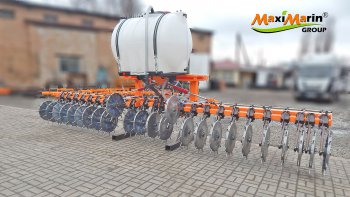Top 10 recommendations for applying liquid fertilizers
 Simply finding and buying liquid fertilizers is not enough, judging by the experience of agribusiness representatives.
Simply finding and buying liquid fertilizers is not enough, judging by the experience of agribusiness representatives.
They must also be used correctly to achieve the main goal of every farmer - a bountiful and tasty harvest.
Here are ten basic and useful recommendations from experts on the proper application of liquid fertilizers.
1.The stage of plant development should be taken into account before applying liquid fertilizers. The same plant needs different substances at different stages of its life cycle. For example: nitrogen is a priority in the initial period of development, and in preparation for winter, the plant needs to get a sufficient supply of potassium. This is important to consider before applying a fertilizer.
2. The nutrient solution should be used immediately after cooking. Liquid fertilizers that are ready for self-use and those that are added to tank mixes are stored for only a few days.
3. Feeding should be carried out under favorable conditions. The soil and air should be warm enough to apply liquid fertilizers by root and foliar methods. That is, the snow should melt by the time the liquid fertilizer is applied.
4.It is safer to apply the mixture to moist soil. When applying fertilizer to dry soil, the concentration of the solution increases, which suppresses the plant. Try to water the soil without flooding it before applying fertilizer.
5. . Do not exceed the dosage of liquid fertilizers specified in the instructions. Concentrated, water-soluble fertilizer is a preparation that is balanced in the composition of micro- and macronutrients, vitamins and minerals. Therefore, if the mixture is diluted with water in insufficient proportions, the roots, seeds or leaves of plants (depending on the method of fertilization) may receive chemical burns due to overdose.
6. . It is necessary to take into account the quality of soil fertility and the amount of fertilizers applied when determining the dosage. Determining the rate of application of liquid fertilizer in the autumn should depend on the specific type of soil and whether the fertilizer was applied to the soil after winter.
7.Terms of fertilizer application must not be violated. The type of liquid fertilizer affects the seasonality of their application. Nitrogen preparations are applied in the spring. Preparations in which nitrogen is present in ammonia form can be applied not only in spring but also in autumn in clay and loamy soils. Potassium chlorine-containing fertilizers are best applied in autumn; Potassium products that do not contain chlorine can be applied in both autumn and spring. And if the application takes place in sandy soil, then in the summer. Phosphorus fertilizers can be applied during spring and autumn.
8.Do not spray liquid fertilizers when exposed to sunlight. Foliar treatment of plants with liquid fertilizers is recommended in the absence of direct sunlight, preferably in the evening.
9.The plant should be sprayed with water after applying the mixture by soil. This will help avoid burns to the leaves in case of accidental drops of the solution. Because, the solution for root feeding of plants is more concentrated than for their spraying.
10. Take into account the specifics of a particular liquid fertilizer when applying it. It is proved that in high doses, nitrogen leads to the accumulation of nitrates in fruits and vegetables. Therefore, the application of liquid nitrogen fertilizers should be completed one month before harvest.





